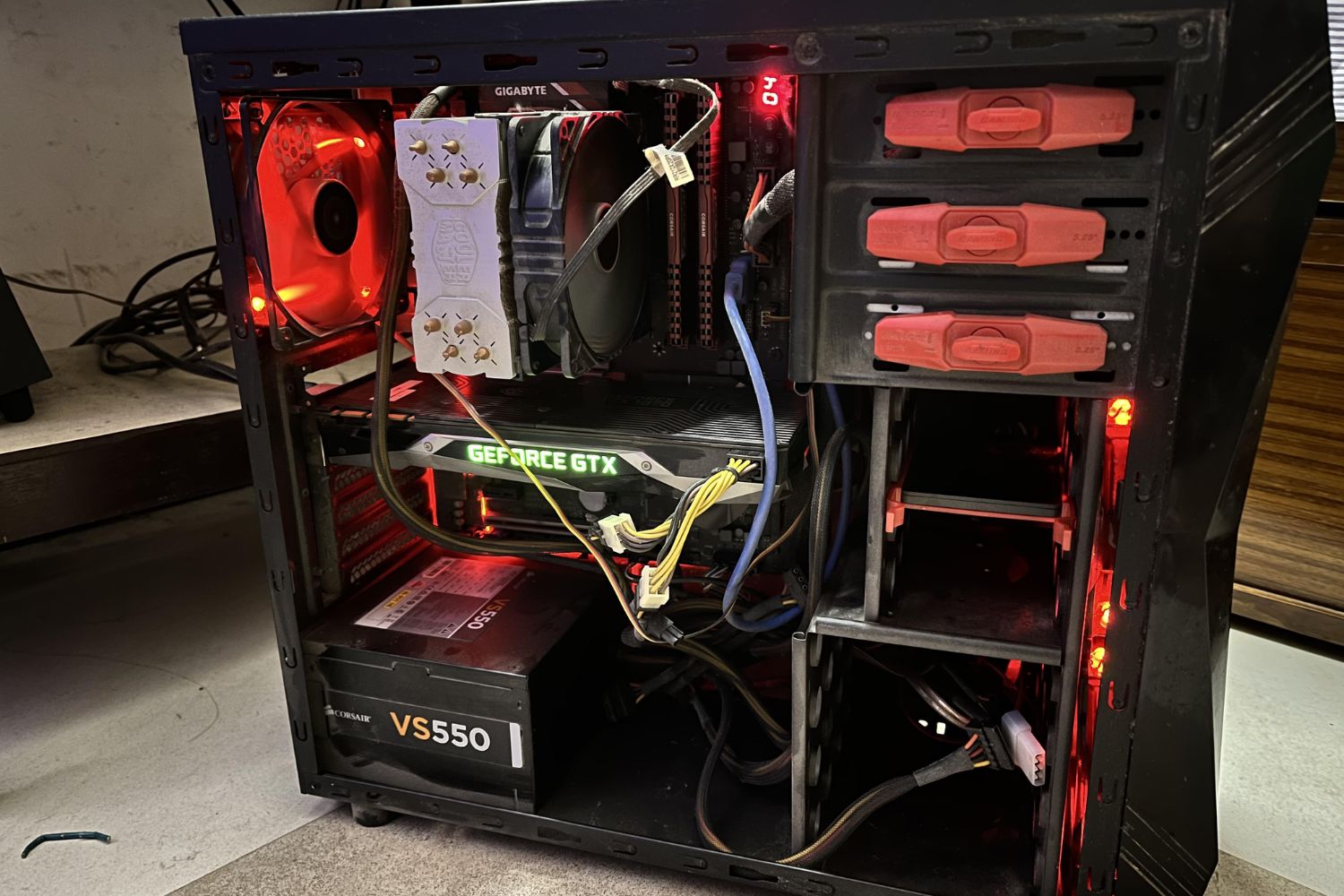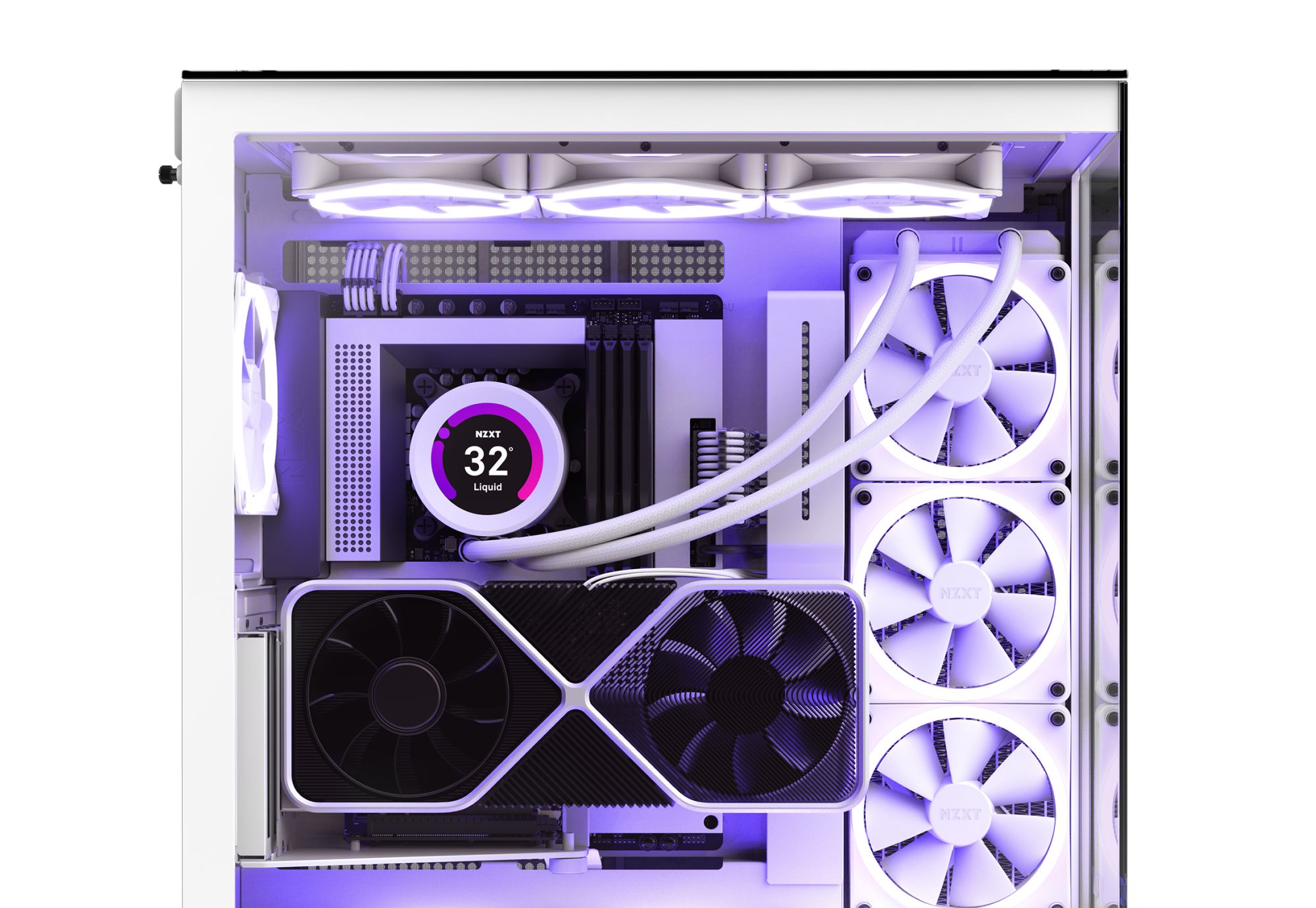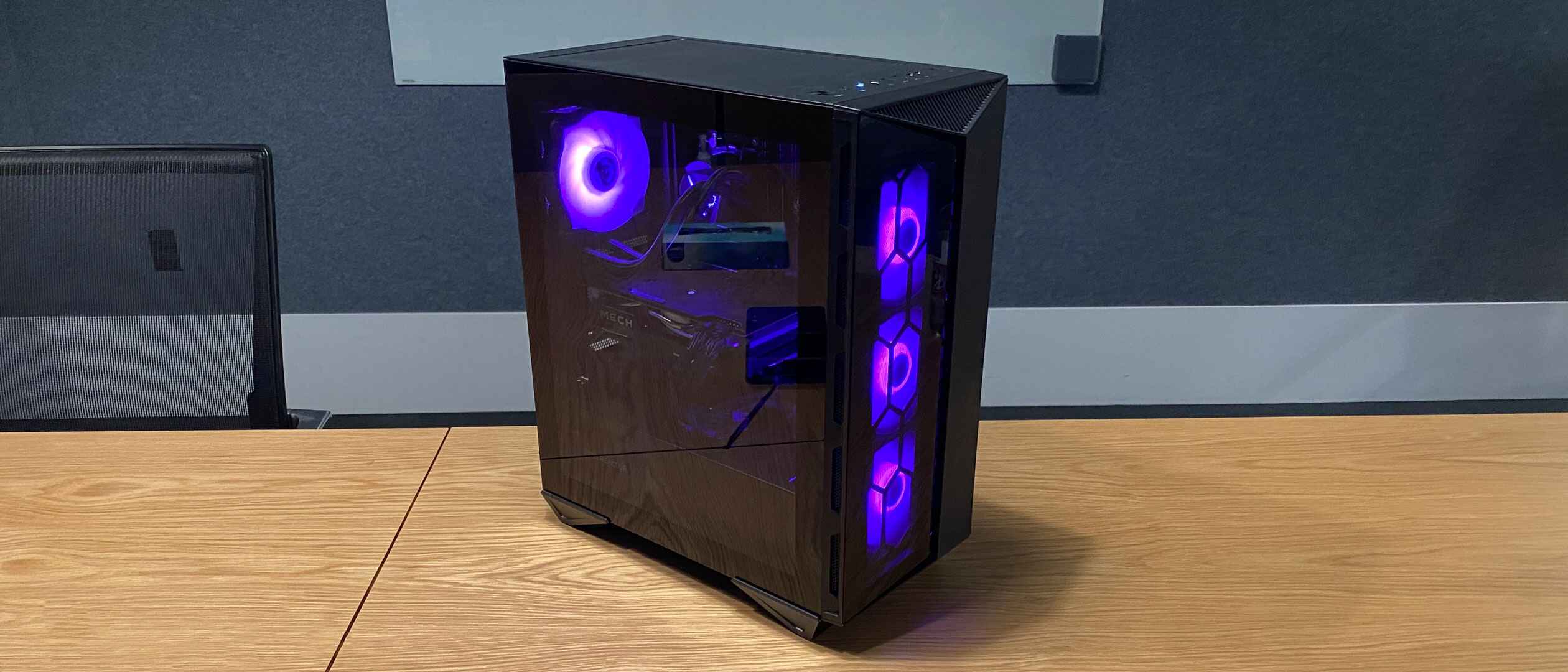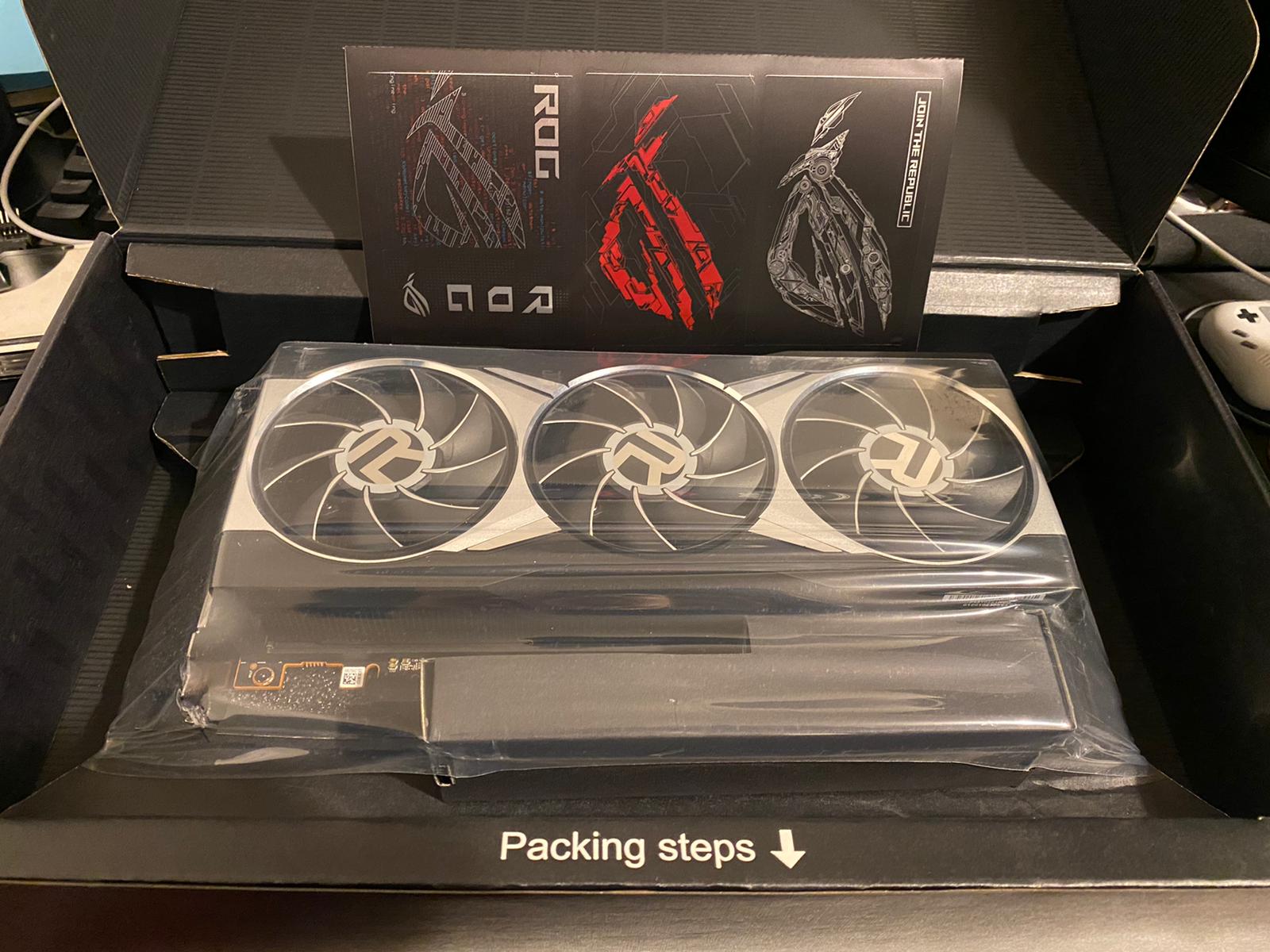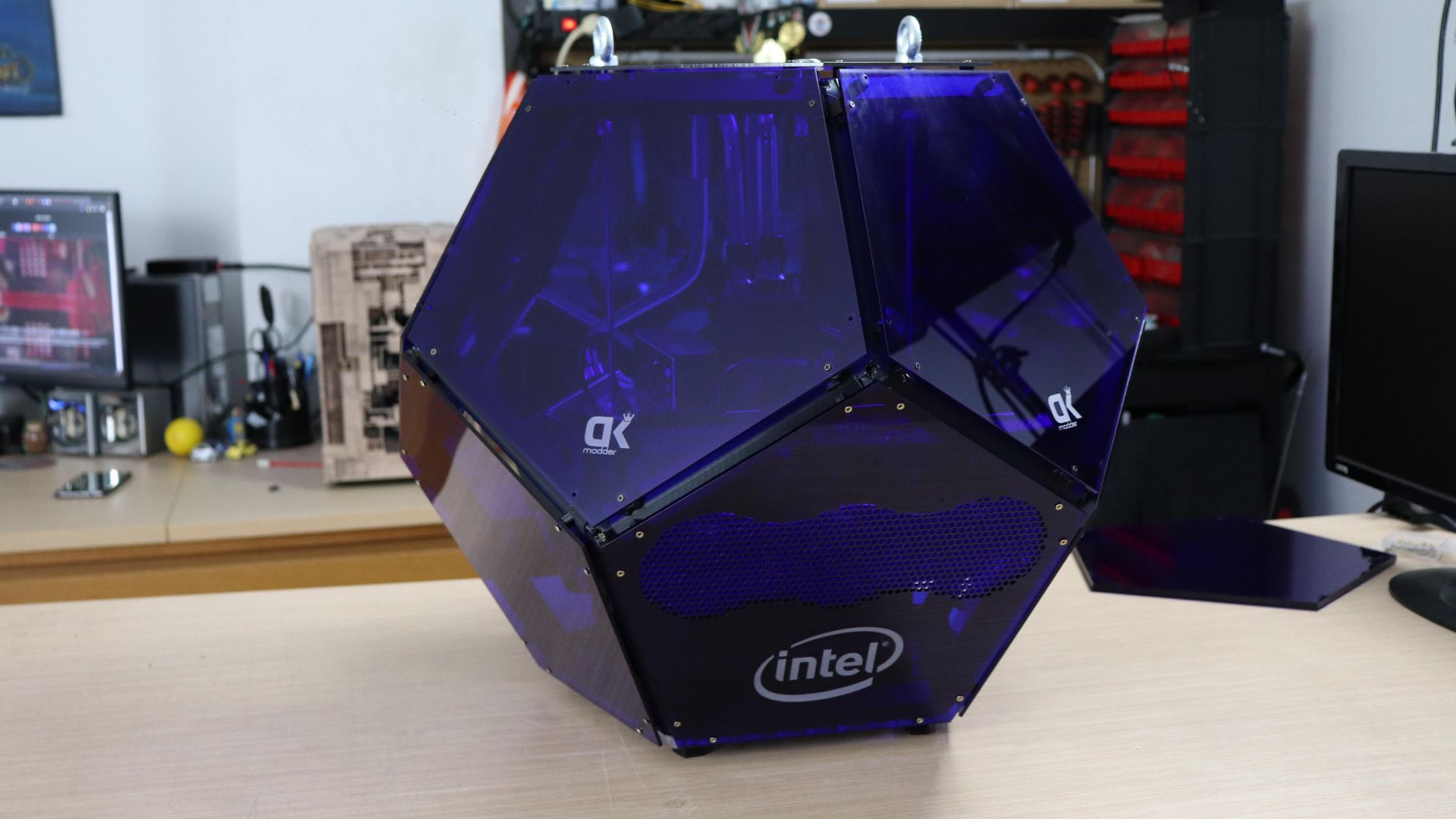Introduction
Welcome to the world of PC customization and upgrades! If you’re looking to sell your PC case, you’ve come to the right place. Whether you’re upgrading to a new case or simply need to make some extra cash, selling your PC case can be an excellent way to recoup your investment and make someone else’s PC dreams come true.
But where do you start? How do you ensure that your PC case stands out from the crowd and attracts potential buyers? In this guide, we will walk you through the process of selling your PC case effectively.
Selling a PC case requires more than just listing it on a marketplace. You need to know how to present it in the best light, both visually and through your product description. From choosing the right case to packaging it for safe shipping, we’ll cover all the essential steps to help you sell your PC case quickly and at the best possible price.
Keep in mind that while the demand for PC cases is high, competition is fierce. To succeed in this competitive market, you need to highlight the unique features of your case and effectively communicate its benefits to potential buyers. Understanding the needs and preferences of your target audience will also play a crucial role in attracting the right buyers for your PC case.
So, are you ready to turn your PC case into cash? Let’s dive into this guide and learn how to sell your PC case like a pro.
Choosing the Right PC Case
Before you can sell your PC case, you need to ensure that it’s the right choice for potential buyers. Here are some factors to consider when selecting the right PC case to sell:
- Compatibility: Make sure the case is compatible with the buyer’s hardware. Check the size restrictions, the number and type of drive bays, and the cooling options available.
- Aesthetics: PC builders have diverse tastes, so choose a case with a visually appealing design. Look for features like tempered glass panels, RGB lighting, or sleek minimalistic designs.
- Build Quality: Opt for a case that is built with durable materials and offers good cable management options. Buyers want a case that not only looks great but also provides functionality and ease of use.
- Size: Consider the dimensions of the case. Some buyers may require a compact case for a small form-factor build, while others may want a full tower for maximum expansion and airflow.
- Brand Reputation: Popular brands like Corsair, Cooler Master, and NZXT have established a reputation for manufacturing high-quality cases. Selling a renowned brand can increase buyer confidence.
Once you’ve chosen the right PC case, make sure to gather all the necessary information about the case’s specifications. This includes details about the dimensions, supported motherboard sizes, drive compatibility, front panel connectivity, and any additional features or accessories included with the case.
By offering a well-chosen and desirable PC case, you increase the likelihood of attracting potential buyers who are specifically looking for the features and specifications your case provides.
Preparing the PC Case for Sale
Now that you have chosen the right PC case to sell, it’s important to prepare it properly to attract potential buyers and ensure a smooth selling process. Follow these steps to prepare your PC case for sale:
- Clean and Inspect: Thoroughly clean the PC case, removing any dust, fingerprints, or smudges. Inspect for any scratches, dents, or damages that may affect the aesthetics or functionality of the case.
- Remove Personal Information: If the PC case was previously used, remove any personal information or stickers that may be present on the case. This includes usernames, passwords, or any other identifying information.
- Restore to Default Settings: If the PC case includes any integrated lighting or fan control systems, make sure to restore them to default settings. This ensures that the buyer can personalize the case according to their preferences.
- Packaging and Accessories: Gather all the original packaging materials and accessories that came with the PC case, such as screws, cables, or additional components. This adds value to the sale and gives the buyer a complete package.
- Test the Functionality: Before listing your PC case for sale, test its functionality to ensure that all the components, such as USB ports, audio jacks, and power buttons, are working properly.
- Documenting Condition: Take clear and detailed photos or videos of the PC case, highlighting any unique features or damages that may affect the buyer’s decision. Be transparent about the condition to build trust with potential buyers.
By properly preparing the PC case for sale, you demonstrate professionalism and care to potential buyers. A clean and well-documented PC case will grab the attention of buyers and increase the chances of a successful sale.
Cleaning and Organizing the PC Case
When selling a PC case, it is essential to present it in the best possible condition. Cleaning and organizing the case not only improves its visual appeal but also gives potential buyers the impression that the case has been well-maintained. Here are some steps to follow when cleaning and organizing your PC case:
- Remove Dust and Debris: Use compressed air or a soft brush to gently remove any dust or debris that may have accumulated inside the case. Pay attention to the fan blades, vents, and filters to ensure optimal airflow.
- Clean Exterior Surfaces: Wipe the exterior surfaces of the PC case using a soft cloth and mild cleaning solution. This will remove fingerprints, grease, and other smudges, making the case look shiny and new.
- Organize Cables: Neatly organize the cables inside the case using cable ties or Velcro straps. This not only improves the aesthetics but also allows for better airflow and easier cable management for the next user.
- Remove Unnecessary Components: If there are any components or accessories inside the PC case that are not included in the sale, remove them. This prevents confusion and ensures that the buyer receives only what is listed in the product description.
- Clean Optical Drives or Storage Bays: If the PC case has optical drives or storage bays, clean and organize them. Remove any dust or debris and ensure that the bays are ready for the buyer’s use.
- Double-Check Connectors and Components: Ensure that all connectors, screws, and components inside the case are properly secured. Double-check that no loose components or wires could potentially cause damage during shipping.
By taking the time to clean and organize the PC case, you present it in a more appealing and professional manner. Potential buyers will appreciate the attention to detail and cleanliness, which can positively impact their decision to purchase the case.
Taking High-Quality Product Photos
When selling a PC case, high-quality product photos can significantly impact the buyer’s decision-making process. Clear and visually appealing photos can help showcase the features and condition of the case, attracting potential buyers. Here are some tips for taking high-quality product photos:
- Use Sufficient Lighting: Ensure that the PC case is well-lit, either by utilizing natural light or artificial lighting. Adequate lighting helps capture the details and colors of the case accurately.
- Choose the Right Background: Use a clean and neutral background that doesn’t distract from the PC case. A plain white or light-colored background is typically ideal as it allows the case to stand out.
- Capture Multiple Angles: Take photos from different angles to provide potential buyers with a comprehensive view of the PC case. Include front, back, side, and top-down shots to showcase the overall design and functionality.
- Focus on Key Features: Highlight the unique features or selling points of the PC case in your photos. This could include removable dust filters, cable management options, or any RGB lighting effects.
- Showcase Interior Space: Capture a photo of the PC case with the side panel removed, revealing the spaciousness and internal layout. This gives buyers an idea of the room they have for components and future upgrades.
- Use Macro Shots for Detail: Zoom in on specific details like buttons, connectors, or textured surfaces to highlight the quality and craftsmanship of the PC case.
- Include Accessories: If the PC case comes with any additional accessories, such as screws or cable ties, include them in a separate photo to showcase the completeness of the package.
- Photo Editing: After taking the photos, consider basic editing techniques to enhance the colors, brightness, and sharpness. Be careful not to overdo it, as you want the photos to accurately represent the PC case.
Remember, high-quality photos can make a significant difference in attracting potential buyers and generating interest in your PC case. Take the time to capture appealing images that accurately represent the case’s features and condition.
Writing an Attractive Product Description
When selling a PC case, a well-written product description is crucial in grabbing the attention of potential buyers and providing them with the necessary information to make a purchasing decision. Here are some tips for writing an attractive product description:
- Be Clear and Concise: Start by clearly stating the brand, model, and any notable features of the PC case. Use concise and straightforward language to describe its specifications and capabilities.
- Highlight Key Features: Emphasize the unique features of the PC case that differentiate it from others on the market. This could include things like tool-less installation, ample airflow, or support for multiple fan configurations.
- Focus on Benefits: Instead of simply listing specifications, highlight the benefits and advantages that the PC case offers to potential buyers. Explain how the case’s features enhance performance, ease of use, or aesthetics.
- Use Engaging Language: Write the description in a compelling and engaging manner. Use descriptive language to paint a picture of how the PC case can enhance the buyer’s PC building or upgrading experience.
- Include Measurements and Compatibility: Provide accurate dimensions and compatibility information in the product description. This helps potential buyers ensure that the PC case will fit their desired components and setup.
- Mention Condition and History: Be transparent about the condition of the PC case and indicate if it is new, used, or refurbished. If there are any notable damages or wear, clearly mention them to manage buyer expectations.
- Use Keywords: Incorporate relevant keywords throughout the product description to improve its visibility in search engine results. Consider using words like “gaming PC case,” “high airflow,” or “ATX motherboard support” to attract interested buyers.
- Provide Warranty or Return Information: If applicable, mention any warranty coverage or return policies that come with the PC case. This adds reassurance for potential buyers and builds trust in the transaction.
- Encourage Questions and Interaction: Invite potential buyers to reach out with any questions or inquiries they may have. Promptly respond to queries and provide additional information to help them make an informed decision.
By crafting an attractive and informative product description, you can effectively communicate the value and benefits of the PC case to potential buyers. A well-written description increases the chances of attracting interested buyers and facilitating a successful sale.
Setting the Right Price for the PC Case
Determining the right price for your PC case is crucial for attracting potential buyers and maximizing your chances of a successful sale. Here are some factors to consider when setting the price:
- Condition: Take into account the condition of the PC case. If it is brand new or in excellent condition with minimal signs of wear, you can price it higher. However, if there are noticeable damages or wear, adjust the price accordingly.
- Brand and Model: The brand and model of the PC case can also influence its value. Well-known and reputable brands tend to have higher market value. Likewise, certain models with desirable features or unique designs might command a higher price.
- Market Demand: Research the current market demand for PC cases similar to yours. Browse online marketplaces or forums to gain insights into the average selling price for cases of similar specifications and condition.
- Age and Obsolescence: Consider the age of the PC case and how it compares to the latest models. If your case is several years old and lacks modern features or compatibility, you may need to adjust the price accordingly to account for its relative obsolescence.
- Included Accessories: If your PC case comes with additional accessories, such as extra fans, PSU shrouds, or cable management solutions, consider the added value they bring when setting the price. Highlighting these accessories can justify a higher price.
- Competitor Analysis: Check out competing listings for PC cases that are similar to yours. Take note of their prices and adjust your own accordingly to stay competitive in the market without undervaluing your case.
- Bargaining Room: Keep in mind that potential buyers may try to negotiate the price. It’s advisable to set a slightly higher price than your desired selling price to allow room for negotiation while still ensuring a fair value for your PC case.
Take the time to research and consider these factors when setting the price for your PC case. Finding the right balance between a competitive price and ensuring it’s reflective of the case’s condition and value will increase your chances of attracting interested buyers and achieving a successful sale.
Advertising and Marketing the PC Case
Once you have prepared your PC case for sale and set the right price, it’s time to focus on advertising and marketing to reach potential buyers. Here are effective strategies to promote your PC case:
- Online Marketplaces: List your PC case on popular online marketplaces such as eBay, Amazon, or Craigslist. These platforms have a wide reach and attract potential buyers looking for PC components.
- Specialized PC Communities: Join PC enthusiast forums, Reddit communities, or Facebook groups that focus on computer building and PC gaming. Engage with the community and post about your PC case in relevant sections or dedicated buy/sell threads.
- Social Media Platforms: Leverage social media platforms like Twitter, Instagram, or Facebook to showcase your PC case. Use appealing photos, descriptive captions, and relevant hashtags to reach a wider audience of tech enthusiasts and potential buyers.
- Online Classifieds: Explore local online classifieds specific to your region. These platforms are often frequented by local buyers who prefer to meet in person for the transaction, reducing shipping costs and risks.
- Utilize SEO Techniques: Optimize your online listings and descriptions with relevant keywords and phrases. This will improve your visibility in search engine results and increase the chances of potential buyers finding your listing.
- Collaborate with Influencers: Reach out to tech influencers, YouTubers, or bloggers who focus on PC building or gaming. Offer them your PC case to review or feature in their content. This exposure can drive more attention and interest from potential buyers.
- Create Compelling Ad Copy: Craft persuasive and engaging advertisements that highlight the key features and benefits of your PC case. Use descriptive language, emphasize the unique selling points, and create a sense of urgency or exclusivity to attract potential buyers.
- Offer Competitive Deals: Consider offering special promotions or deals to incentivize potential buyers. This could include discounted prices, bundle offers with other PC components, or free shipping.
- Customer Reviews and Testimonials: If you have previous customers who were satisfied with their purchase, ask them for reviews or testimonials that you can display on your listing. Positive reviews provide social proof and build trust with potential buyers.
Remember to regularly monitor and respond to inquiries or comments from interested buyers. Prompt and friendly communication can go a long way in building trust and closing a successful sale. With effective advertising and marketing strategies, you can increase the visibility of your PC case and attract potential buyers who are eager to make a purchase.
Responding to Inquiries and Negotiating with Buyers
As potential buyers show interest in your PC case, it’s crucial to respond promptly and handle negotiations professionally. Here are some best practices for effectively responding to inquiries and negotiating with buyers:
- Respond Promptly: Aim to reply to inquiries as quickly as possible, ideally within 24 hours. A prompt response demonstrates your attentiveness and commitment to the sale.
- Be Polite and Professional: Maintain a friendly and professional tone in your communication. Respond to inquiries courteously and provide accurate information about the PC case.
- Answer Questions Clearly: Address any questions or concerns the potential buyer may have. Provide detailed information about the case’s specifications, condition, and any additional accessories included.
- Communicate Availability: If you are open to negotiating the price or offering discounts, clearly communicate this to potential buyers. Let them know if you are willing to consider reasonable offers.
- Emphasize Unique Selling Points: Highlight the standout features or benefits of your PC case during negotiations. Communicate how these features add value or enhance the buyer’s PC experience.
- Negotiate Responsibly: Consider buyer offers carefully and respond with a counteroffer if necessary. Find a middle ground that is fair to both parties. Be willing to compromise, but avoid undervaluing your PC case.
- Finalize Terms in Writing: When an agreement is reached, document the terms of the sale in writing. This could include the final price, the inclusion of any accessories, payment methods, and shipping details.
- Secure Payment: If possible, opt for secure payment methods such as PayPal or escrow services to protect both the buyer and seller throughout the transaction.
- Arrange Secure Shipping: If the buyer is located remotely and requires shipping, ensure that the PC case is properly packaged to prevent damage during transit. Consider using insured shipping methods for added protection.
- Provide Tracking Information: After shipping the PC case, share the tracking information with the buyer. This allows them to monitor the progress of the delivery and ensures a transparent and reliable transaction.
Remember, maintaining clear and respectful communication throughout the negotiation process builds trust and confidence with potential buyers. By handling inquiries promptly and negotiating responsibly, you increase the likelihood of securing a successful sale.
Packaging and Shipping the PC Case
Proper packaging and shipping of the PC case are essential to ensure that it reaches the buyer safely and in the same condition as advertised. Follow these guidelines to package and ship the PC case securely:
- Gather Packaging Materials: Use sturdy cardboard boxes, bubble wrap, packing peanuts, or foam inserts to provide cushioning and protection for the PC case.
- Disassemble if necessary: If the PC case has removable components such as side panels, hard drive cages, or front panels, safely remove them and wrap them separately to prevent damage during transit.
- Wrap and Secure Cables: Neatly organize and secure any loose cables inside the case using cable ties, Velcro straps, or twist ties. This prevents them from causing damage during shipping.
- Protect Sensitive Areas: Place additional padding or foam around vulnerable areas like the front panel, tempered glass, or plastic bezels to protect them from potential impacts during transit.
- Seal the Package: Ensure the PC case is tightly packed and cannot move inside the box. Use high-quality packing tape to seal the box securely, preventing it from accidental opening during shipping.
- Label and Document: Clearly label the package with the buyer’s address, return address, and any other necessary details. Keep a record of the shipping label and tracking information for your reference and for sharing with the buyer.
- Choose a Reliable Shipping Service: Select a reputable shipping service that offers tracking and insurance options to protect against loss or damage during transit. Consider the shipping service’s reputation and customer reviews.
- Insure the Shipment: If the PC case is valuable, consider purchasing additional insurance coverage for the shipment. This provides added protection in case of loss, theft, or damage during transportation.
- Communicate with the Buyer: Inform the buyer about the date of shipment, tracking number, and estimated delivery time. This keeps them informed and reassured about the progress of their purchase.
- Follow up and Confirm Delivery: After the delivery is completed, follow up with the buyer to ensure they received the PC case in satisfactory condition. Ask for feedback or a confirmation of delivery to complete the transaction.
By carefully packaging and shipping the PC case, you minimize the risk of damage during transit and provide a positive buying experience for the customer. A well-packaged and securely shipped PC case increases customer satisfaction and reduces the likelihood of returns or disputes.
Providing Excellent Customer Service
Delivering excellent customer service is crucial in ensuring a positive experience for the buyer and establishing a good reputation as a seller. Here are some tips for providing outstanding customer service when selling your PC case:
- Responsive Communication: Respond to buyer inquiries and messages promptly and courteously, addressing any concerns or questions they may have. Being attentive and available builds trust and confidence in the buyer-seller interaction.
- Provide Accurate Information: Ensure that the information you provide about the PC case is accurate and detailed. Be transparent about its condition, specifications, and any potential limitations or issues.
- Be Transparent About Policies: Clearly communicate your return policy, warranty coverage (if applicable), and any conditions or limitations associated with the sale. This helps manage buyer expectations and establishes trust.
- Packaging and Shipping Updates: Keep the buyer informed about the progress of packaging and shipping. Provide them with tracking numbers, estimated delivery dates, and any relevant updates so that they are aware of the shipment’s status.
- Handle Issues Professionally: In the event of any problems or concerns raised by the buyer, address them promptly and professionally. Seek resolutions that are fair and mutually beneficial to both parties.
- Post-Sale Support: Offer post-sale assistance to the buyer by providing guidance on setting up the PC case or troubleshooting any issues they may encounter. This adds value to their purchase and demonstrates your commitment to customer satisfaction.
- Request Feedback: After the sale is complete, don’t hesitate to ask the buyer for feedback or a review of their experience. Positive feedback can help build your reputation as a trustworthy seller and attract future buyers.
- Show Gratitude and Appreciation: Express your gratitude to the buyer for their purchase. A simple thank you message can leave a positive lasting impression and encourage buyers to recommend you to others.
- Continual Improvement: Reflect on each transaction and identify areas for improvement. Learn from buyer feedback and strive to enhance your selling process, packaging methods, or communication to provide an even better customer experience.
By providing excellent customer service, you not only ensure a positive buying experience for the customer but also build a reputation as a reliable and trustworthy seller. Word-of-mouth recommendations and positive reviews can significantly contribute to your success as a seller in the long run.
Conclusion
Selling a PC case can be a rewarding and profitable endeavor if done correctly. By following the steps outlined in this guide, you can effectively navigate the process of selling your PC case and increase your chances of a successful sale.
From choosing the right PC case and preparing it for sale to effectively marketing it to potential buyers, each step plays a crucial role in attracting interested parties and closing a successful transaction.
Remember to present your PC case in the best light by taking high-quality product photos, writing an attractive product description, and setting a fair price that reflects the case’s value. Communication and customer service are key throughout the selling process, so be prompt, informative, and professional when responding to inquiries and negotiating with buyers.
Additionally, don’t overlook the importance of securely packaging and shipping the PC case to ensure it arrives safely at its destination. By providing excellent customer service and ensuring a positive buying experience, you can build a reputation as a reliable and trustworthy seller.
With the knowledge and guidance provided in this guide, you are well-equipped to navigate the process of selling your PC case and turn it into a successful and rewarding experience. Good luck with your sale!







